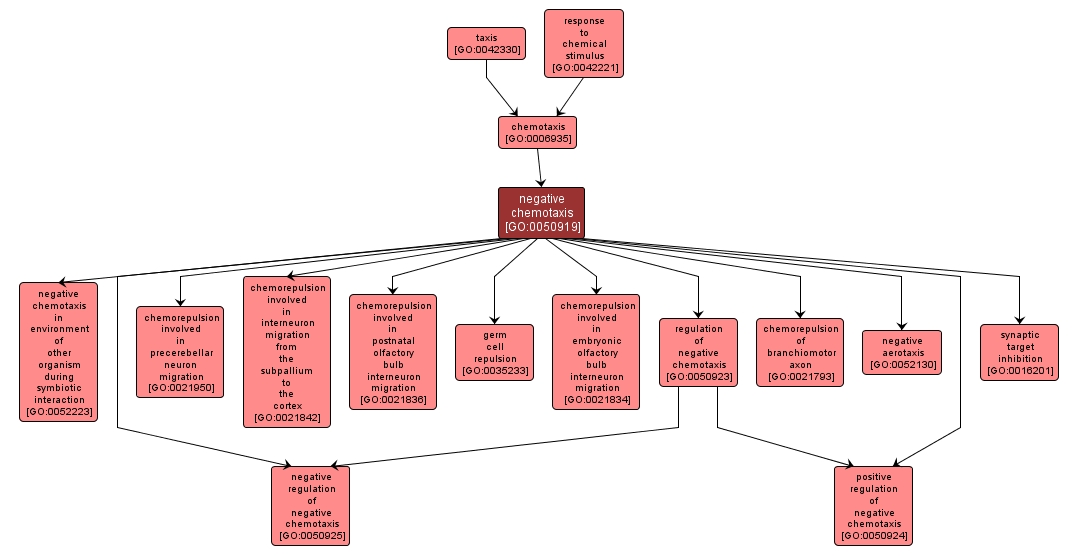GO TERM SUMMARY
|
| Name: |
negative chemotaxis |
| Acc: |
GO:0050919 |
| Aspect: |
Biological Process |
| Desc: |
The directed movement of a motile cell or organism, or the directed growth of a cell guided by a lower concentration, in a concentration gradient of a specific chemical. |
Synonyms:
- chemoaversion
- chemorepulsion
|
|

|
INTERACTIVE GO GRAPH
|














